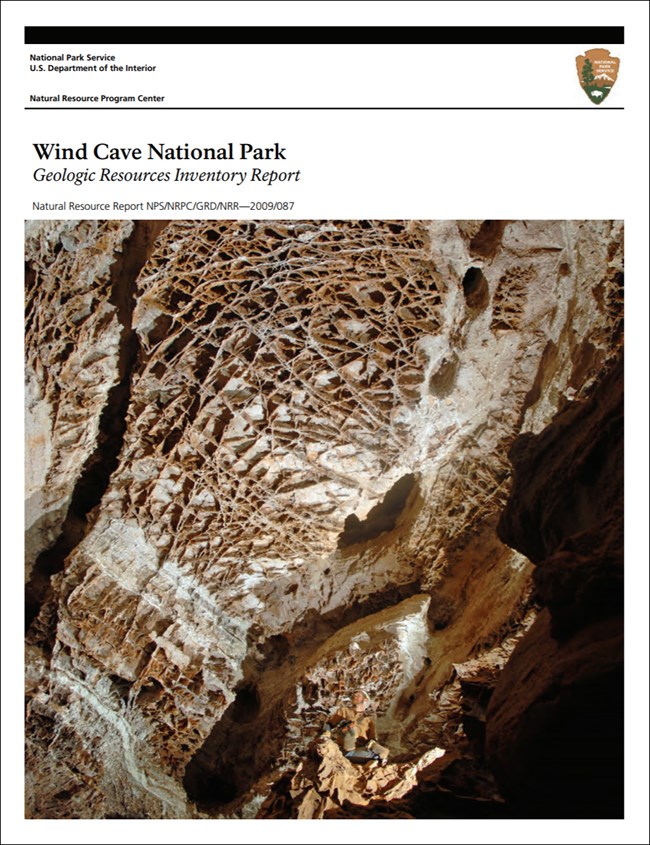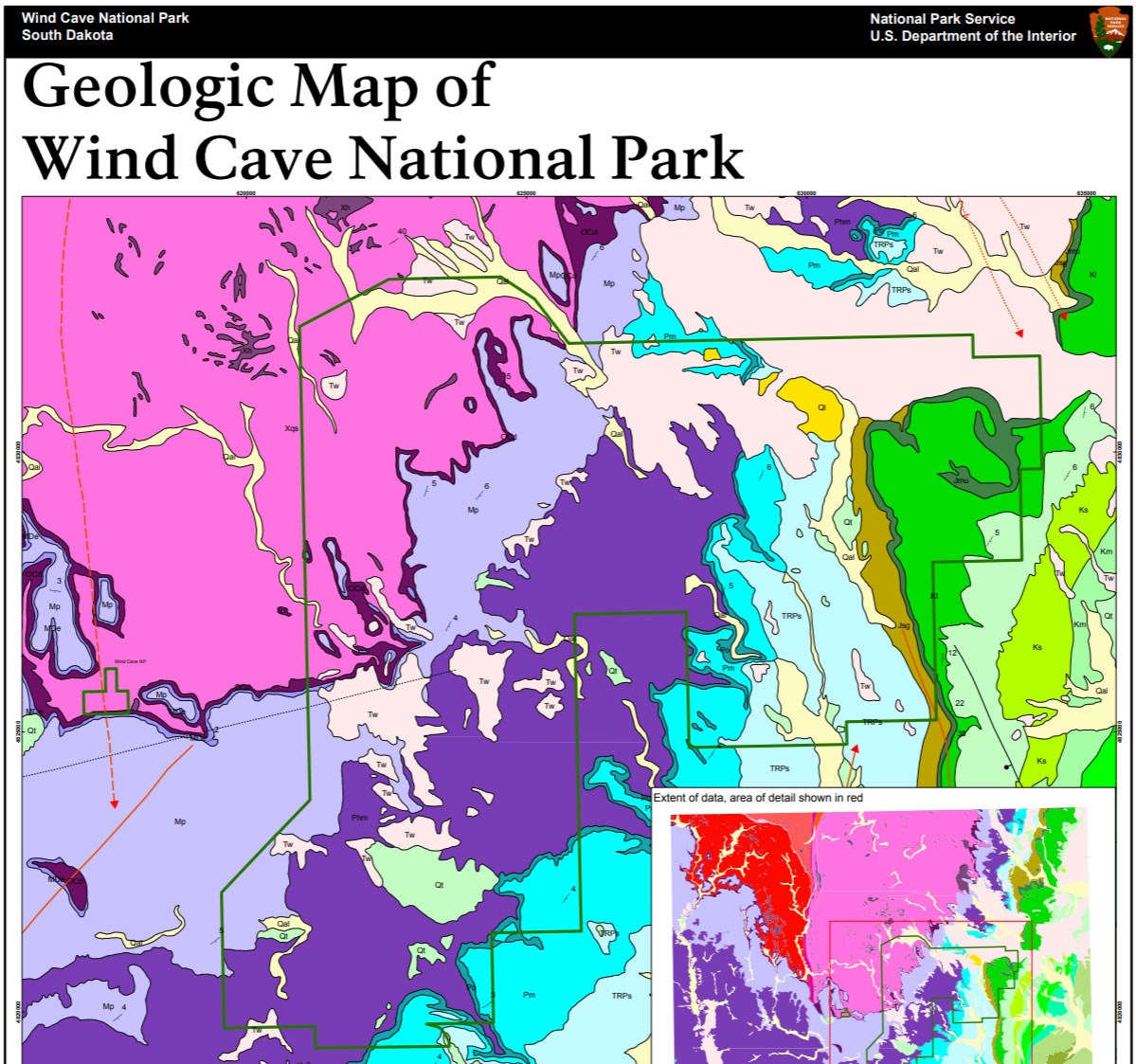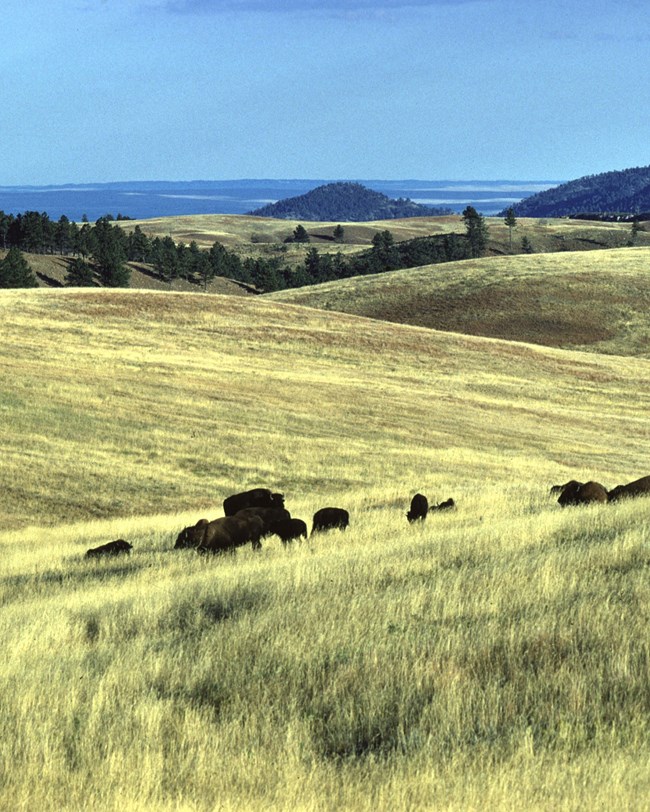Last updated: July 18, 2024
Article
NPS Geodiversity Atlas—Wind Cave National Park, South Dakota
Geodiversity refers to the full variety of natural geologic (rocks, minerals, sediments, fossils, landforms, and physical processes) and soil resources and processes that occur in the park. A product of the Geologic Resources Inventory, the NPS Geodiversity Atlas delivers information in support of education, Geoconservation, and integrated management of living (biotic) and non-living (abiotic) components of the ecosystem.

Introduction
Wind Cave National Park (WICA) is located on the southeastern edge of the Black Hills approximately 8 km (5 mi) north of Hot Springs in Custer County, southwestern South Dakota. Established on January 9, 1903, WICA contains about 13,728 hectares (33,924 acres) and protects Wind Cave, one of the longest, oldest, and most complex caves on Earth. Although Native Americans have known about the entrance to Wind Cave for thousands of years, the first white discovery of the cave occurred in 1881 when Jesse and Tom Bingham experienced strong winds blowing from the cave’s natural opening (National Park Service 2011). Wind Cave features an assemblage of unique cave resources that include beautiful boxwork and calcite crystal formations, and the park represents a premier location to view remnants of ancient sediment-filled caves (Palmer et al. 2016). Above the cave system, WICA supports one of the most intact prairie communities in North America, hosting bison, pronghorn, deer, elk, the endangered black-footed ferret, prairie dogs, and mountain lions.
Geologic Setting
Wind Cave National Park is situated in the Great Plains physiographic province on the southeastern flank of the Black Hill Uplift, an elongate domal uplift stretching across approximately 0.8 million hectares (2 million acres) along the South Dakota–Wyoming border. Development of the Black Hills primarily occurred during the Paleocene approximately 60 to 50 million years ago due to collisional tectonic forces associated with the Laramide Orogeny (Lisenbee 1988; Lisenbee and DeWitt 1993). Uplifted Paleozoic and Mesozoic strata were eroded away from the central region of the Black Hills, exposing a core of ancient Precambrian metamorphic and igneous rocks. The bedrock underlying WICA consists of Paleoproterozoic crystalline rocks that include quartzite, metapelite, and the Harney Peak Granite—the same unit that provided a medium for the busts of U.S. Presidents Washington, Jefferson, Roosevelt, and Lincoln at MORU. A diverse assemblage of Cambrian through Cretaceousage sedimentary strata is widely distributed across WICA, generally dipping away from the central Black Hills region (Palmer et al. 2016). Wind Cave and nearby Jewel Cave share the same regional geologic history, and both cave systems have primarily developed within carbonate rocks of the Mississippian Pahasapa Limestone.
Paleontological Resources
All NPS fossil resources are protected under the Paleontological Resources Preservation Act of 2009 (Public Law 111-11, Title VI, Subtitle D; 16 U.S.C. §§ 470aaa - 470aaa-11).
Regional Geology
Wind Cave is a part of the Great Plains Physiographic Province and shares its geologic history and some characteristic geologic formations with a region that extends well beyond park boundaries.
- Scoping summaries are records of scoping meetings where NPS staff and local geologists determined the park’s geologic mapping plan and what content should be included in the report.
- Digital geologic maps include files for viewing in GIS software, a guide to using the data, and a document with ancillary map information. Newer products also include data viewable in Google Earth and online map services.
- Reports use the maps to discuss the park’s setting and significance, notable geologic features and processes, geologic resource management issues, and geologic history.
- Posters are a static view of the GIS data in PDF format. Newer posters include aerial imagery or shaded relief and other park information. They are also included with the reports.
- Projects list basic information about the program and all products available for a park.
Source: NPS DataStore Saved Search 3200. To search for additional information, visit the NPS DataStore.
A NPS Soil Resources Inventory project has been completed for Wind Cave National Park and can be found on the NPS Data Store.
Source: NPS DataStore Saved Search 3225. To search for additional information, visit the NPS DataStore.
Related Articles
Wind Cave National Park
National Park Service Geodiversity Atlas
The servicewide Geodiversity Atlas provides information on geoheritage and geodiversity resources and values within the National Park System. This information supports science-based geoconservation and interpretation in the NPS, as well as STEM education in schools, museums, and field camps. The NPS Geologic Resources Division and many parks work with National and International geoconservation communities to ensure that NPS abiotic resources are managed using the highest standards and best practices available.


